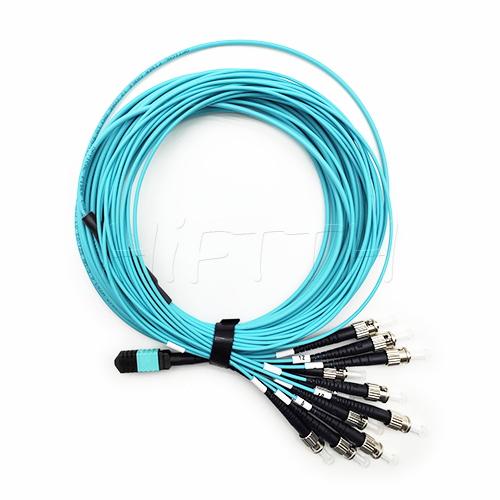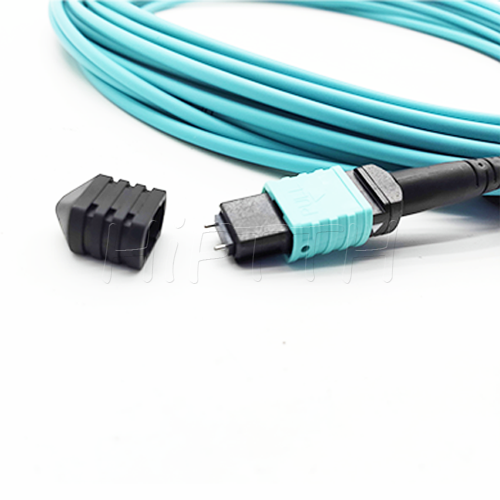Fiber optic patch cords are vital in fiber optic networks, connecting devices like switches and computers. They come in single-mode for long distances and multi-mode for shorter ranges. Equipped with connectors (e.g., LC, SC), they ensure efficient light transmission. Available in various lengths and with specific jacket materials, these cords are crucial for high-speed, high-bandwidth data transmission, playing a key role in the performance and reliability of optical communication systems.

These patch cords are widely used in data centers for high-speed data transmission. They connect various network devices like servers, switches, and storage units, facilitating efficient and fast data transfer.
Used in central offices and indoor telecommunications facilities for connecting different equipment within the network.
With the increasing demand for high-speed internet, these patch cords are also used in home fiber optic internet setups, connecting modems to routers or other home networking equipment.
Connecting devices in a local area network (LAN).
Used in FTTA to connect base stations to Remote Radio Units (RRUs) located on cell towers. particularly in 4G and 5G networks, where it plays a critical role in signal processing and transmission.
Ideal for use in outdoor settings where exposure to moisture, temperature fluctuations, and UV radiation is a concern.
Essential for ensuring reliable data transmission in outdoor segments of telecom networks.
Military and field communication setups often use these cords due to their durability and resistance to harsh conditions.
Transmission of Light Signals: At one end, the patch cord is connected to a transmitter, which converts electrical signals into light signals. The light signal travels through the core of the optical fiber, which is a thin strand of glass or plastic.
Core and Cladding: The core is the inner part of the fiber where the light travels. Surrounding the core is the cladding, which reflects the light back into the core, preventing signal loss and allowing the light to travel long distances.
Connector Types:Each end of the patch cord has a connector (like LC, SC, ST, or FC) that plugs into a corresponding port on different devices (like switches, routers, servers, or optical distribution frames). The connectors align the fiber core precisely with the optical pathway in the device, ensuring efficient light signal transfer.
Signal Reception: At the receiving end, the patch cord is connected to a receiver, which converts the light signals back into electrical signals. These electrical signals are then processed by the receiving device.
Single-Mode and Multi-Mode Variations: In single-mode fibers, the core is very thin, allowing only one mode (path) of light to propagate. This type is used for long-distance transmission due to its ability to maintain the integrity of the light signal over longer distances. Multi-mode fibers have a thicker core, allowing multiple modes of light to propagate. They are used for shorter distances, as the multiple paths of light can lead to signal distortion over longer stretches.
Data Transmission: The light signals can represent digital data, which is used for communication in computer networks, telecommunication systems, and various other digital applications.
Outdoor Installation: Waterproof patch cords are used in outdoor installations, such as connecting equipment in Fiber to the Antenna (FTTA) setups.
Connecting to Remote Radio Heads (RRH): In FTTA, these patch cords connect base station equipment to RRHs located on cell towers. They must withstand environmental challenges like rain, wind, and UV exposure.
Maintaining Signal Integrity: Despite the rugged exterior, the internal fiber optic technology ensures that the signal integrity is maintained, providing high-speed and reliable data transmission.
Handling Environmental Stress: The waterproof and ruggedized features protect the internal fibers from water damage, corrosion, and physical impacts, ensuring long-term durability and consistent performance.





Have you see me in the pond ?












































































































Here is more

One-stop Fiber Optic Passive materials of FTTH
Free Samples Available.
Hi!
We will contact you within 1 working day, please pay attention to the email with the suffix “@hiftth.com”.
Come visit our Product Datasheet and discover a product your need.

Leave the Product Type
Be the first to know which Fiber Optic materials 100% meet your need in FTTH solutions.